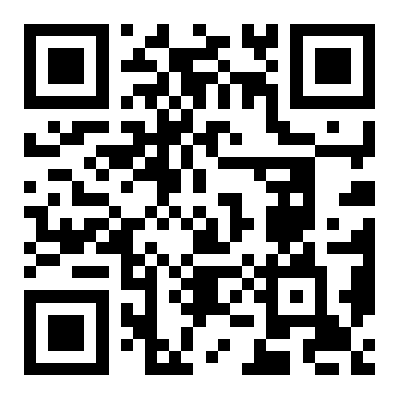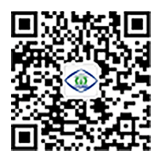| [1] |
MARTINELL D P, CASHION T, PARKER R, et al. Closing the high seas to fisheries: Possible impacts on aquaculture[J]. Marine Policy, 2020, 115: 103854. DOI: 10.1016/j.marpol.2020.103854
|
| [2] |
ZHOU C, XU D, LIN K, et al. Intelligent feeding control methods in aquaculture with an emphasis on fish: A review[J]. Reviews in Aquaculture, 2018, 10(4): 975-993. DOI: 10.1111/raq.12218
|
| [3] |
胡利永,魏玉艳,郑堤,等. 基于机器视觉技术的智能投饵方法研究[J]. 热带海洋学报,2015(4):90-95.
HU Liyong, WEI Yuyan, ZHENG Di, et al. Research on intelligent feeding method based on machine vision technology[J]. Journal of Tropical Oceanography, 2015(4): 90-95. (in Chinese with English abstract).
|
| [4] |
俞国燕,张宏亮,刘皞春,等. 水产养殖中鱼类投喂策略研究综述[J]. 渔业现代化,2020,47(1):1-6.
YU Guoyan, ZHANG Hongliang, LIU Haochun, et al. A review of fish feeding strategies in aquaculture[J]. Fishery Modernization, 2020, 47(1): 1-6. (in Chinese with English abstract).
|
| [5] |
BUTAIL S, PALEY D A. Three-dimensional reconstruction of the fast-start swimming kinematics of densely schooling fish[J]. Journal of the Royal Society Interface, 2012, 9(66): 77-88. DOI: 10.1098/rsif.2011.0113
|
| [6] |
LIU Z, LI X, FAN L, et al. Measuring feeding activity of fish in RAS using computer vision[J]. Aquacultural Engineering, 2014, 60: 20-27. DOI: 10.1016/j.aquaeng.2014.03.005
|
| [7] |
陈志鹏,陈明. 基于光流法与图像纹理特征的鱼群摄食行为检测[J]. 南方农业学报,2019,50(5):1141-1148.
CHEN Zhipeng, CHEN Ming. Detection of fish feeding behavior based on optical flow method and image texture features[J]. Journal of Southern Agriculture, 2019, 50(5): 1141-1148. (in Chinese with English abstract).
|
| [8] |
陈雨琦,冯德军,桂福坤,等. 采用机器视觉和傅里叶频谱特征的循环水养殖鱼类摄食状态判别[J]. 农业工程学报,2021,37(14):155-162.
CHEN Yuqi, FENG Dejun, GUI Fukun, et al. Discrimination of feeding status of fish in recirculating aquaculture systems using machine vision and Fourier spectrum features[J]. Transactions of the Chinese Society of Agricultural Engineering(Transactions of the CSAE), 2021, 37(14): 155-162. (in Chinese with English abstract).
|
| [9] |
李济泽,位威,张凯凯. 基于机器视觉的养殖鱼摄食行为识别方法[J]. 福建工程学院学报,2022,20(4):378-382.
LI Jize, WEI Wei, ZHANG Kaikai. A recognition method for feeding behavior of farmed fish based on machine vision[J]. Journal of Fujian University of Technology, 2022, 20(4): 378-382. (in Chinese with English abstract).
|
| [10] |
张佳林,徐立鸿,刘世晶. 基于水下机器视觉的大西洋鲑摄食行为分类[J]. 农业工程学报,2020,36(13):158-164.
ZHANG Jialin, XU Lihong, LIU Shijing. Classification of feeding behavior of atlantic salmon based on underwater machine vision[J]. Transactions of the Chinese Society of Agricultural Engineering(Transactions of the CSAE), 2020, 36(13): 158-164. (in Chinese with English abstract).
|
| [11] |
CHENG K, TANG Q, GUO X, et al. High dose of dietary vitamin D3 modulated the yellow catfish (Pelteobagrus fulvidraco) splenic innate immune response after Edwardsiella ictaluri infection[J]. Fish & Shellfish Immunology 2020, 100: 41-48.
|
| [12] |
刘丽,匡纲要. 图像纹理特征提取方法综述[J]. 中国图象图形学报,2009,14(4):622-635.
LIU Li, KUANG Gangyao. A survey of image texture feature extraction methods[J]. Journal of Image and Graphics, 2009, 14(4): 622-635. (in Chinese with English abstract).
|
| [13] |
卢聆江,刘昭伟,杨童,等. 圆柱绕流尾涡图像的灰度特征和纹理特征[J]. 水力发电学报. 2022,41(9):1-11.
LU Lingjiang, LIU Zhaowei, YANG Tong, et al. Grayscale histogram and texture features of wake vortex image behind circular cylinder[J]. Journal of Hydroelectric Engineering, 2022, 41(9): 1-11. (in Chinese with English abstract).
|
| [14] |
HARALICK R M, SHANMUGAM K, DINSTEIN I . Textural features for image classification[J]. IEEETransactions on Systems, Man, and Cybernetics, 1973(6): 610-621.
|
| [15] |
GADELMAWLA E S. A vision system for surface roughness characterization using the gray level co-occurrence matrix[J]. NDT & e International, 2004, 37(7): 577-588.
|
| [16] |
孙华魁. 数字图像处理与识别技术研究[M]. 天津:天津科学技术出版社,2019:156-158.
|
| [17] |
刘辉,张云生,张印辉,等. 基于灰度差分统计的火焰图像纹理特征提取[J]. 控制工程,2013,20(2):213-218.
LIU Hui, ZHANG Yunsheng, ZHANG Yinhui, et al. Flame image texture feature extraction based on gray-scale difference statistics[J]. Control Engineering of China, 2013, 20(2): 213-218. (in Chinese with English abstract).
|
| [18] |
莫德举,梁光华. 数字图像处理[M] . 北京:北京邮电大学出版社,2010:129-130.
|
| [19] |
RAVVE I, KOREN Z. Analytical hilbert-transform attributes of ricker and gabor wavelets[J]. IEEE Transactions on Geoscience and Remote Sensing, 2023, 61: 1-16.
|
| [20] |
PAKDEL M, TAJERIPOUR F. Texture classification using optimal gabor filters[C]// 1st International eConference on Computer and Knowledge Engineering (ICCKE).Mashhad, Iran: IEEE, 2011: 208-213.
|
| [21] |
WU F, ZHU C, XU J, et al. Research on image text recognition based on canny edge detection algorithm and k-means algorithm[J]. International Journal of System Assurance Engineering and Management, 2022, 13: 72-80.
|
| [22] |
吴俊,柯飂挺,任佳. 参数自动优化的特征选择融合算法[J]. 计算机系统应用,2020,29(7):145-151.
WU Jun, KE Liuting, REN Jia. Feature selection fusion algorithm with automatic parameter optimization[J]. Computer Systems & Applications, 2020, 29(7): 145-151. (in Chinese with English abstract).
|
| [23] |
QUINLANJ R. C4. 5: Programs for Machine Learning[M]. San Mateo, USA: Morgan Kaufmann Publishers, Inc., 2014: 58-60.
|
| [24] |
MENG X, ZHANG P, XU Y, et al. Construction of decision tree based on C4.5 algorithm for online voltage stability assessment[J]. International Journal of Electrical Power & Energy Systems, 2020, 118: 105793.
|
| [25] |
SADOUL B, MENGUES P E, FRIGGENS N C, et al. A new method for measuring group behaviours of fish shoals from recorded videos taken in near aquaculture conditions[J]. Aquaculture, 2014, 430: 179-187. DOI: 10.1016/j.aquaculture.2014.04.008
|
| [26] |
AN D, HAO J, WEI Y, et al. Application of computer vision in fish intelligent feeding system: A review[J]. Aquaculture Research, 2021, 52(2): 423-437. DOI: 10.1111/are.14907
|
| [27] |
YANG X, ZHANG S, LIU J, et al. Deep learning for smart fish farming: Applications, opportunities and challenges[J]. Reviews in Aquaculture, 2021, 13(1): 66-90. DOI: 10.1111/raq.12464
|
| [28] |
刘丽,赵凌君,郭承玉,等. 图像纹理分类方法研究进展和展望[J]. 自动化学报,2018,44(4):584-607.
LIU Li, ZHAO Lingjun, GUO Chengyu, et al. Research progress and prospects of image texture classification methods[J]. Acta Automatica Sinica, 2018, 44(4): 584-607. (in Chinese with English abstract).
|
| [29] |
|
| [30] |
谭鹤群,李玉祥,朱明,等. 通过图像增强与改进Faster-RCNN网络的重叠鱼群尾数检测[J]. 农业工程学报,2022,38(13):167-176.
TAN Hequn, LI Yuxiang, ZHU Ming, et al. Overlapping fish counting based on image enhancement and improved Faster-RCNN network[J]. Transactions of the Chinese Society of Agricultural Engineering(Transactions of the CSAE), 2022, 38(13): 167-176. (in Chinese with English abstract).
|
| [31] |
谌雨章,王诗琦,周雯,等. 基于SPD-Conv结构和NAM注意力机制的鱼群小目标检测[J]. 计算机科学,2024,51(S1):438-444.
CHEN Yuzhang, WANG Shiqi, ZHOU Wen, et al. Small object detection for fish based on SPD-Conv and NAM attention module[J]. Computer Science, 2024, 51(S1): 438-444. (in Chinese with English abstract).
|













 DownLoad:
DownLoad: